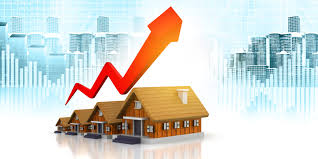Real Estate Reimagined: Adapting to New Market Trends After the Pandemic
Read latest blogs and articles from Housystan

The Information mentioned here was last updated on:
4/1/2026The landscape of real estate has transformed dramatically in the aftermath of the pandemic, pushing industry professionals and homebuyers in every region to rethink their strategies. As cities and towns across the globe adapt to new priorities, understanding the latest market trends is crucial for anyone interested in buying, selling, or investing in property. Whether you’re searching for a home in bustling urban centers or peaceful suburban neighborhoods, recognizing the shifts brought about by recent global events will empower you to make informed decisions.
The demand for flexible living spaces has surged, with more individuals prioritizing home offices, outdoor areas, and energy-efficient features. Urban dwellers are increasingly considering moves to smaller cities or suburban communities where they can enjoy more space and a higher quality of life. This migration is reshaping local real estate markets, driving growth in previously overlooked regions and opening up new investment opportunities. Buyers are now focusing on locations that offer a blend of convenience, affordability, and lifestyle amenities, making it essential for sellers to highlight these features in their listings.
Technology plays a pivotal role in this new era. Virtual tours, digital open houses, and online closings have become standard, allowing buyers and sellers to connect seamlessly regardless of their location. Real estate agents are leveraging advanced analytics to provide accurate market insights, ensuring clients can act swiftly in competitive environments. This digital transformation benefits both seasoned investors and first-time homebuyers, streamlining the process and making transactions more transparent.
- Verified Tenants/Buyers
- Unlimited Property Listing
- Zero subscription/charges fee
For those interested in local markets, it’s important to stay updated on neighborhood-specific trends. Some areas are experiencing rapid appreciation due to an influx of remote workers, while others are stabilizing as people return to city life. Partnering with knowledgeable agents who understand these geographic nuances is key to maximizing value. As the real estate market continues to evolve post-pandemic, staying proactive and informed will help you navigate changes and achieve your property goals, no matter where you are.